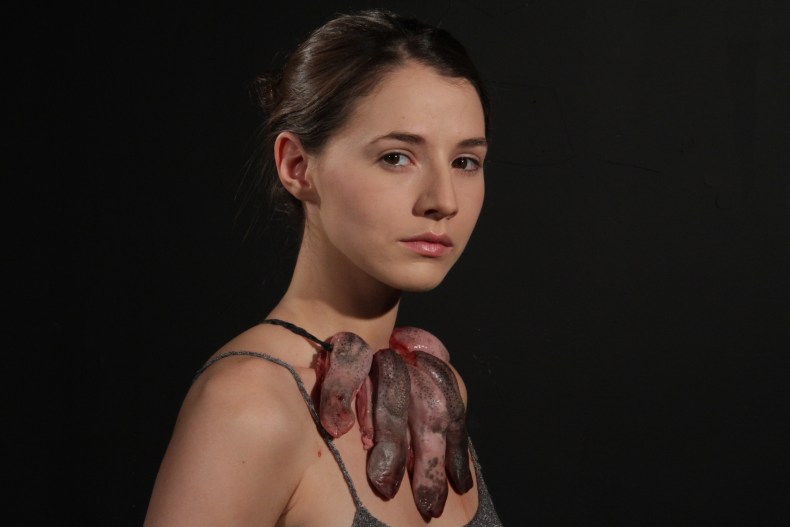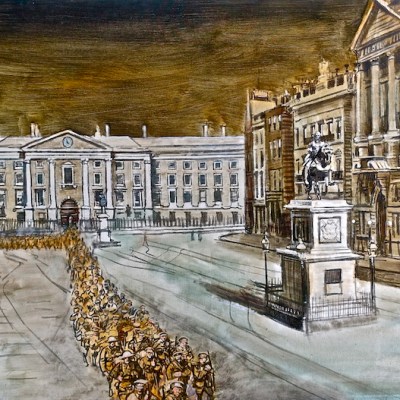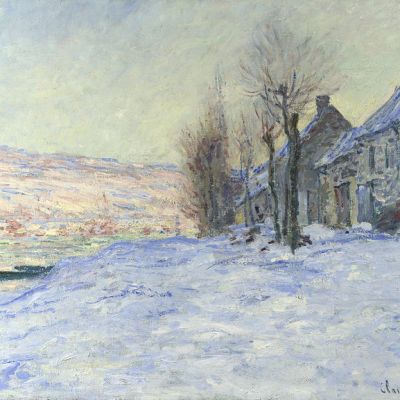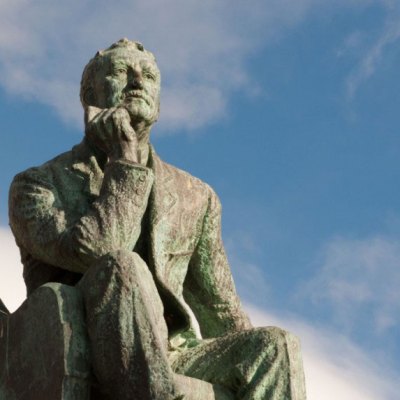During the decade I spent living in Dublin, every political discussion in the pub seemed to end with my Irish friends declaiming ‘800 years of oppression!’ It was a recurring joke prompted by my Englishness, but the same expression is used less glibly by Koyo Kouoh, the curator of this year’s EVA International, the contemporary art biennial held in Limerick. Kouoh argues that ‘postcolonial discourse is absent in the Republic of Ireland’, and despite the much repeated phrase I used to encounter, it’s easy to overlook Ireland’s former colonial status.
Drawing attention to the length of the British occupation of Ireland is one driving force behind this edition of the biennial, which more widely attempts to untangle Ireland’s postcolonial condition. For the Cameroon-born, Senegal-based Kouoh, whose own curatorial practice has done much to promote contemporary African art, Ireland is ‘the first and foremost colonial laboratory of the British enterprise’. Colonialism, she reminds us, did not just happen in far-flung places. This year’s biennial takes place against the backdrop of the centenary celebrations of the Easter Rising, the Irish Republican attack on British rule that contributed to the formation of an independent state in 1922. In many ways, the commemorations have stimulated nationwide reflection on those easily dashed-off 800 years.
I am struck by Kouoh’s claims that she would have mounted the same show irrespective of the 1916 context, that it was merely a ‘coincidence’. This has to do, in part, with the global ambitions of a biennial that looks beyond Ireland to Africa, Southeast Asia and South America. This geographical expanse – of the 57 artists only 12 are Irish – puts Ireland’s history into a productive dialogue with non-European countries recovering from colonial experiences, places also familiar with violence, migration, and the struggle for independence. The shadow of 1916 can nevertheless be seen in Tom Flanagan and Megs Morley’s poetic essay film A History of Stone, Origin and Myth, as well as Jonathan Cummins’ more hard-hitting film installation featuring conversations with a group of IRA anti-Good Friday Agreement activists.
Installation view of ‘This beautiful striped wreckage (which we interrogate)…’, (2016), Michael Joo. Courtesy the artist, Blain|Southern and EVA International; photo: Miriam O’Connor

There is, however, another local context at play here. Kouoh stresses that EVA is not Limerick’s biennial but Ireland’s, yet the specific context of Limerick is integral to the biennial’s staging: occupying six sites around the city, the event includes many newly commissioned works that respond to Limerick’s history. Although Kouoh rightly notes the importance of holding EVA outside Dublin, a short-term regional event like this raises questions about lasting impact, public interest (beyond an international or even local art crowd), and the possibility for sustained cultural regeneration. As director Woodrow Kernohan tells me, EVA is a central part of Limerick’s bid for the 2020 European Capital of Culture. This, coupled with the fact that it’s the city’s 37th hosting, suggests that EVA is more than just a fleeting contemporary art show.
One prominent site-specific work is the installation This beautiful striped wreckage (which we interrogate)… by the Korean-American artist Michael Joo, which takes over the Sailor’s Home, a crumbling mid 19th-century listed building. Joo’s subtle intervention alerts us to the building’s historical imprint by reinstalling on the lower floor original door and window frames saved during the building’s restoration. The ghostliness of this gesture finds echoes in a video projection situated on the upper deck of the building, depicting an emaciated 3rd-century Buddha. Drawn from the collection of the British Museum, the figure calls to mind art’s relationship with colonial plunder. In the rooms below are found objects from the nearby docks – the former trading centre of a now post-industrial city.
In King John’s Castle, once the heart of Norman power and still a potent reminder of invasion, Vietnamese artist Võ Trân Châu reconfigures Vietnamese royal costume, while in the Limerick City Gallery of Art, Godfried Donkor’s Rebel Madonna Lace Collection links the history of Limerick’s handmade lace traditions with Ghana’s own machine-led industry. EVA has also breathed new life into Cleeve’s condensed milk factory, a vast industrial complex that leaves an impression long after I visit, not least because of the impressive range of works on show there – including ambitious video installations such as Public Studio’s Road Movie and Kader Attia’s Reason’s Oxymoron. Reinvigorating vacant buildings such as Cleeve’s supports creative industry at a local level: the site was first used by EVA in 2014 after being bought by the city council. That this biennial was developed on a shoestring – it received just over €220,000 public funding from the Arts Council of Ireland – adds to the achievement. ‘It’s not acceptable to work under such conditions,’ Kouoh says.
Cassandra’s Necklace (2016), Alice Maher. photo: courtesy Vivienne Dick

Notably, the catalogue accompanying EVA includes Irish translations of all texts, a gesture that chimes with the event’s broader commitment to recovering silenced voices and unspoken histories. Connections between language and national identity are particularly fraught in an Irish context. James Joyce was famously frustrated by countrymen such as Patrick Pearse – a key figure in the Easter Rising – whom he saw as attempting to disparage the English language. In some ways Ireland’s history of occupation is also a history of linguistic struggles; it’s no wonder that language as a theme runs through this show. Alice Maher’s two-screen film Cassandra’s Necklace takes the mythological Greek figure of the cursed prophet Cassandra and refuses to let her speak: a silencing made more potent by the necklace of bloody tongues she wears around her neck. Other linguistic works are more literal, including Liam Gillick’s And then… – a film festival in a pub that draws on Ireland’s oral storytelling (and drinking) traditions but which falls decidedly flat.
The biennial’s evocative title, Still (The) Barbarians, is drawn from ‘Waiting for the Barbarians’ (1898) by the Greek poet Constantine Cavafy. Cavafy’s poem explores various meanings associated with the term ‘barbarians’ – especially concerning power and civilisation – which continue to resonate in a contemporary political context. During EVA’s press conference we are told that two participating artists have been detained in Dakar and prevented from flying to Ireland because their Irish visas are seen as suspicious. It’s a potent reminder of the problems still facing postcolonial nations. Who are the barbarians now? With this in mind, and at a time when Europe is mired in debates about borders, migration, and national interests, an exhibition like EVA feels particularly urgent.
‘EVA international: Ireland’s Biennial’ runs until 17 July, Limerick City.
From the June issue of Apollo: preview and subscribe here


